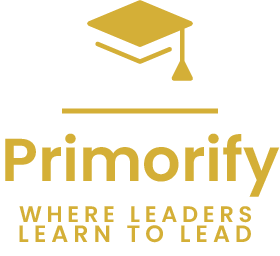
Navigating Leadership Dynamics When You're Not The Decision Maker
Navigating Leadership Dynamics When You're Not The Decision Maker
With an understanding of the complex nature of leadership dynamics, you can effectively engage in your role even when you're not the decision maker. Recognizing the influence you hold within your team is vital; your insights and contributions can shape discussions and outcomes. Building strong relationships with key decision-makers can enhance your credibility and provide opportunities to sway decisions in a positive direction. By being proactive and maintaining a solution-oriented mindset, you can navigate these dynamics successfully and foster a collaborative environment.
Key Takeaways:
Develop strong relationships with decision-makers to influence outcomes effectively.
Utilize effective communication strategies to articulate ideas and gain support from stakeholders.
Stay proactive in understanding the larger organizational context to align your contributions with broader goals.
Understanding Leadership Dynamics
While navigating workplace relationships, it's vital to grasp the underlying leadership dynamics that govern interactions. You might not hold the title of a decision-maker, but understanding how leadership operates can empower you and inform your strategies. This comprehension will allow you to influence outcomes effectively, build solid relationships, and contribute to your team's success.
Defining Leadership Roles
Against the backdrop of your organization's hierarchy, recognizing the diverse leadership roles within it is vital. Different individuals influence decisions, and understanding these roles will help you interact more productively. Pay attention to how both formal and informal leaders operate and the impact they have on the team's direction.
The Importance of Influence
Alongside formal authority, your ability to influence outcomes can significantly shape leadership dynamics. Understanding this can empower you to engage more effectively with colleagues and superiors.
Hence, leverage your interpersonal skills and insights to cultivate influence. Establishing trust and enhancing communication can position you as a go-to person within your team. By actively participating in discussions, sharing your expertise, and demonstrating a collaborative spirit, you can sway decisions, foster a healthy team environment, and even inspire others to follow your lead. This approach not only enhances your value but also creates a more empowered work culture.
Building Relationships with Decision Makers
Even if you're not the one making decisions, forging strong relationships with decision makers can significantly influence your effectiveness. Engaging with these individuals allows you to share insights, demonstrate your value, and ultimately position yourself as a trusted collaborator. Your ability to connect and communicate effectively will enhance your influence and help shape outcomes to align with your goals.
Strategic Networking
On a tactical level, networking strategically involves identifying key decision makers within your organization or industry. Focus on attending events, joining relevant groups, and leveraging social media platforms to establish connections. Cultivating these relationships will provide avenues for collaboration and open doors for opportunities to share your ideas and perspectives.
Effective Communication Techniques
An effective communication strategy can significantly enhance your interactions with decision makers. Employ a mix of active listening, assertiveness, and clarity to ensure your ideas are conveyed effectively. Tailor your communication style to fit the preferences of the decision maker, making it easier for them to receive, understand, and appreciate your contributions.
Further, prioritize active listening to truly grasp the needs and concerns of decision makers. When presenting your ideas, focus on clarity and avoid jargon to ensure your message is easily understood. Use assertive communication techniques to convey confidence without being confrontational. By cultivating these skills, you can create an environment where your insights are valued and considered, ultimately fostering stronger partnerships with those in power.
Enhancing Your Influence
Not being the decision-maker doesn't diminish your ability to impact outcomes. By enhancing your influence, you can effectively advocate for your ideas and drive initiatives forward. Cultivating strong relationships, understanding organizational dynamics, and strategically communicating can position you as a trusted resource, making others more receptive to your suggestions and fostering collaboration.
Leveraging Expertise
One effective way to enhance your influence is by leveraging your expertise. When you position yourself as a knowledgeable professional in your field, others will seek your insights and value your opinions. By sharing your knowledge through presentations, discussions, or written materials, you establish credibility that can sway decision-makers.
Using Data to Support Your Ideas
Any time you present an idea, supporting it with reliable data can significantly increase its impact. Using strong, relevant statistics and well-researched information demonstrates your credibility and strengthens your argument. By framing your suggestions with data, you not only provide a solid foundation for your ideas but also resonate more effectively with decision-makers.
Understanding how data can support your ideas is important for influencing outcomes. Compiling and analyzing data allows you to present a compelling narrative that showcases the potential benefits of your proposal. Utilizing visuals, such as graphs and charts, can help simplify complex information and make it more accessible, turning numbers into persuasive stories. You empower your position by emphasizing statistics that align with your organization's goals, while also forecasting potential impacts. This data-driven approach not only reinforces your arguments but also positions you as a strategic thinker in the eyes of your peers and leadership.
Navigating Organizational Politics
Unlike traditional hierarchies, organizational politics require you to be astutely aware of interpersonal dynamics and power plays. Understanding the subtleties of political landscapes can help you leverage your relationships and influence decisions, even when you’re not the one calling the shots. By navigating these dynamics effectively, you can position yourself as a valuable contributor, making a lasting impact within your organization.
Identifying Key Stakeholders
After assessing your organization’s structure, you must identify key stakeholders who hold influence over decisions that affect your work or team. These individuals may include higher-ups, peers, or even support staff whose opinions matter. By recognizing their interests and motivations, you can tailor your approach to engage with them more effectively and align your objectives with theirs.
Managing Conflicts and Alliances
With the rise of diverse opinions and competing priorities, conflicts are an inevitable part of organizational life. It’s necessary for you to navigate these tensions while also seeking out potential alliances. By approaching conflicts with an open mind and a collaborative spirit, you can foster understanding among differing viewpoints that allow for productive dialogue.
Plus, successful conflict management can turn potential adversaries into allies, enhancing collaboration and building a stronger working environment. Stay vigilant and be proactive in addressing issues before they escalate into bigger problems. This involves listening actively, practicing empathy, and seeking common ground. It’s also vital to recognize that not all alliances will serve your interests—choose wisely. By establishing strong connections and managing disputes effectively, you can solidify your standing in the organization and influence outcomes more successfully.
Collaborative Decision Making
Despite the challenges you may face as a leader without final decision-making power, embracing a collaborative approach can help you influence outcomes. By fostering a team environment that values shared insights and diverse opinions, you can leverage the collective intelligence of your group to drive more effective decisions. Engaging your team not only enhances the quality of discussions but also promotes a culture of inclusivity and shared ownership.
Encouraging Team Input
About fostering an environment where your team feels valued and heard is important for encouraging input. You can achieve this by actively soliciting opinions and recommendations during discussions. Make it clear that each member's perspective is significant, which can enhance their commitment to the process and lead to more innovative solutions.
Facilitating Discussions
Among the most effective strategies for collaborative decision-making is facilitating open discussions that empower team members to express their ideas freely. Encouraging a safe space for dialogue can inspire creativity and deepen understanding among team members. You can establish ground rules, actively listen, and guide conversations to ensure that every voice is acknowledged while Steering the focus toward shared goals.
In fact, facilitating discussions requires your attentiveness and skill in moderating conversations effectively. By applying active listening, you signal to your team that their contributions are valued, which builds trust and encourages further engagement. Additionally, utilizing techniques such as brainstorming or structured feedback sessions can help manage the flow of ideas, leading to a more coherent and participatory decision-making process. Ultimately, your ability to create a supportive discussion environment can transform conversations into powerful initiatives that enhance team cohesion and decision quality.
Maintaining Professional Integrity
All leaders, regardless of their decision-making power, must prioritize maintaining their professional integrity. This commitment to ethics not only shapes your reputation but also influences the culture within your team. By acting consistently with your values and principles, you establish trust among your colleagues, fostering an environment where collaboration and honesty thrive.
Upholding Values
Across various situations, you must remain steadfast in upholding your values. Emphasizing transparency and fairness strengthens your credibility and reinforces the importance of a principled approach in navigating complex dynamics. By remaining consistent in your beliefs, you inspire confidence and loyalty from your team members.
Dealing with Ethical Dilemmas
With leadership often comes the challenge of facing ethical dilemmas. You may find yourself at a crossroads where your values clash with organizational expectations. In such instances, your ability to assess and navigate these moral quandaries is necessary for preserving your integrity.
Integrity is tested in moments of ethical dilemmas, where you must weigh the consequences of your decisions. Prioritize open communication and seek input from trusted colleagues to explore all possible outcomes. Challenge negative norms and advocate for a solution that aligns with your ethics. Stay true to your principles, even under pressure, because your actions shape the ethical landscape of your environment. Always remember that leading by example holds significant weight and demonstrates your unwavering commitment to ethical leadership.
Conclusion
The ability to navigate leadership dynamics when you’re not the decision maker is vital for your personal and professional growth. By honing your communication skills and building strong relationships with key stakeholders, you can influence outcomes and contribute positively to your team. Understanding the motivations and pressures faced by decision makers allows you to position your input effectively. Embrace a proactive mindset, seek collaborative opportunities, and remain adaptable to changes, as these qualities will empower you to thrive in any leadership environment.
FAQ
Q: How can I effectively communicate my ideas to decision-makers when I’m not in charge?
A: To communicate your ideas effectively, start by understanding the priorities and goals of the decision-makers. Tailor your message to align your suggestions with their objectives. Use clear and concise language to present your ideas, and be prepared with data or examples to support your position. Engaging in regular check-ins or meetings where you can share insights may also help create an environment for constructive dialogue.
Q: What strategies can I employ to influence decisions in a positive way?
A: Influencing decisions can be achieved through building strong relationships with key stakeholders. Establish trust and credibility by demonstrating your expertise and willingness to collaborate. Utilize active listening to understand their perspectives and concerns. You may also consider framing your recommendations as solutions to their challenges, which helps in positioning your input as valuable to their decision-making process.
Q: How do I manage my feelings of frustration when decisions don’t align with my views?
A: It’s natural to feel frustrated when decisions diverge from your perspective. Focus on channeling those feelings productively by seeking to understand the rationale behind the decision. Engage in open discussions to voice your concerns while remaining respectful and professional. Additionally, consider exploring alternative ways to contribute positively to the outcomes, such as offering support in implementing the decision or brainstorming potential adjustments down the line.

